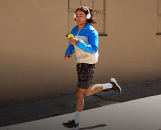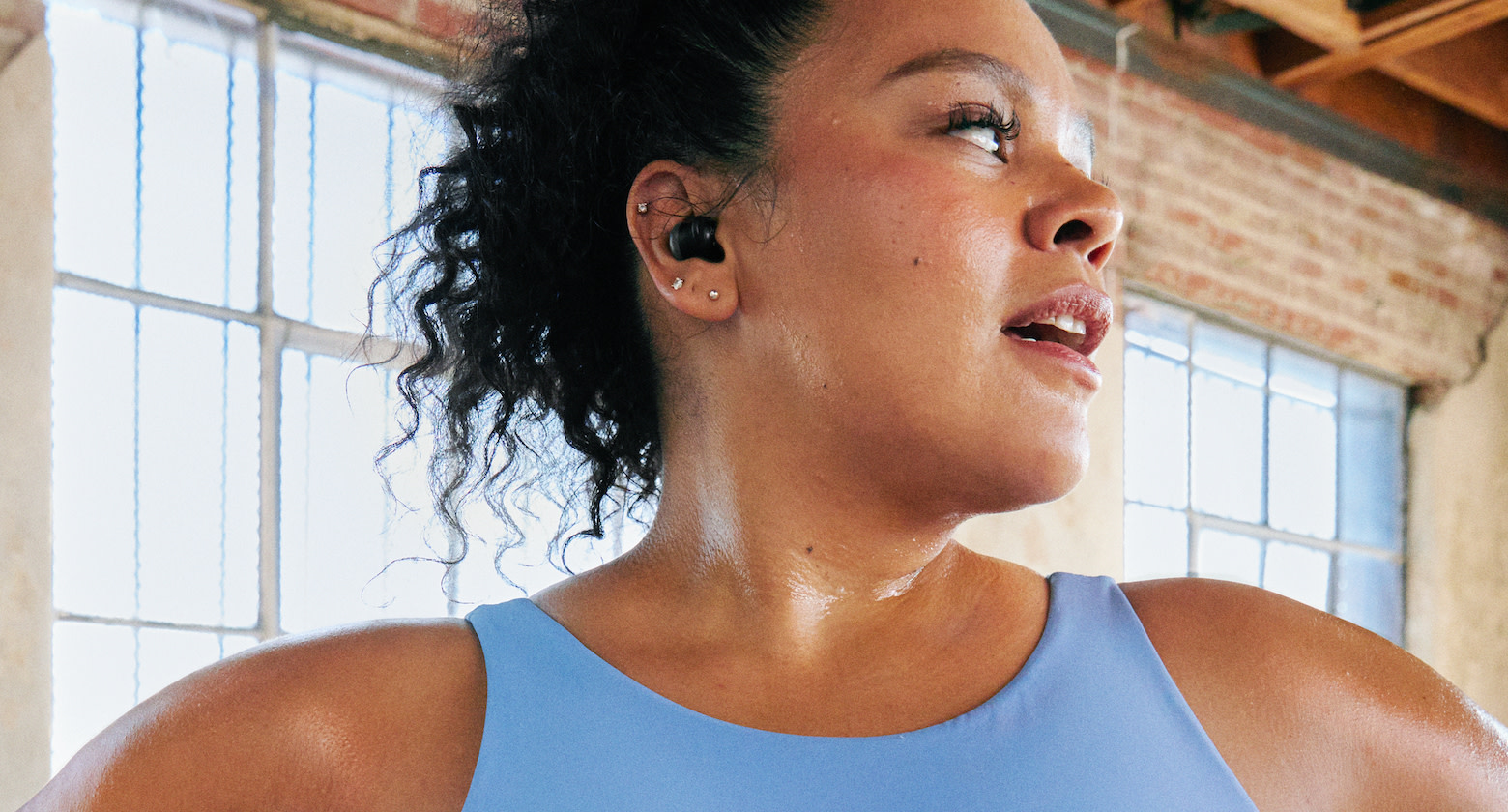
skynesher / E+ via Getty Images
Why So Many Athletes Eat Candy or Other Forms of Sugar Before, During, or After Workouts
A little sweet treat delivers rapid energy to your hard-working muscles, but there are a few limitations to keep in mind.
By Jennifer Heimlich•
Why Do Some People Eat Sugar Before, During, or After a Workout?
When to Eat Sugar Before, During, or After a Workout
Is There a ‘Best’ Type of Sugar to Eat for Exercise?
6 Things to Remember When Fueling Workouts with Sugar
The Takeaway
I recently tried an experiment: Just before the start of any run, I’d munch on a handful of sour gummies. I’d been feeling like I was slogging through my miles lately, so I wondered if having some sugar might help boost my energy.
It turns out, my anecdotal hypothesis was correct. Even on easy runs when I wasn’t thinking about pace, I ended up running about 10–20 seconds faster per mile when I had a bit of candy in my belly. I also found myself enjoying the miles more—not only because sour gummies are delicious but also because I felt like I had more gas in the tank. When I reverted to running without a sugar boost again, I slipped back to my old paces and that feeling like I was dragging my legs through molasses.
I’m far from the first person to discover the power of sugar before a workout—or sugar during a workout, or even sugar after a workout. Whether it’s candy straws, gummy bears, or chocolate sweets, eating sugar can be a smart way to fuel your training. The key is to use it strategically. Here’s what sports dietitians want you to know about harnessing the power of sugar for your workouts.
Why Do Some People Eat Sugar Before, During, or After a Workout?
Many athletes eat sugar to fuel their workouts because it offers a quick, easy source of energy.
And the truth is, even if you don’t think you’re fueling your training with sugar, you probably are. “What a lot of people don’t know is that all the sports foods that you consume are made of sugar,” says sports dietitian Stephanie Hnatiuk, RD. “Your gels, your sports drinks, your chews, your bars—it’s sugar. Fancy sugar, but sugar.” In some ways, grabbing a handful of candy instead is simply a cheaper alternative.
That’s because sugar is fast-acting workout fuel. “It’s rapidly absorbed and converted to immediate energy,” explains registered dietitian nutritionist Danielle Crumble Smith, RDN. Within about 15–20 minutes of having that sweet treat, your working muscles are getting the energy they need to power your workouts. In comparison, if you snacked on a slower-digesting complex carbohydrate, like a sweet potato, it would take longer for those calories to get to your muscles.
When to Eat Sugar Before, During, or After a Workout
One major disclaimer: Not all workouts call for sugar all the time. Here’s when having some candy can actually come in handy.
Sugar Before a Workout
If you’re going to be doing high-intensity cardio for longer than an hour, eating a little sugar first can help make sure your muscles have the fuel they need. “If we don’t have that glycogen available to burn, then we’ll have a really hard time hitting the intensity that we’re trying to aim for,” Hnatiuk says.
And if you’ve got less than 20 minutes before you start exercising, simple carbs like candy will make sure that glycogen is available to your working muscles in time, Hnatiuk says. “You’re going to have an immediate jolt of energy,” Crumble Smith says.
Sugar During a Workout
While eating sugar before a workout will give you a boost at the start, you’ll need to keep that fuel coming to maintain your energy—and prevent a crash—during long, vigorous training sessions. “If you’re running a marathon, you need to continuously replenish that rapidly-digesting sugar,” Crumble Smith says.
When you’re performing high-intensity cardio, your muscles quickly burn up the glycogen you’re giving them, so it needs to be replaced every 30–45 minutes. Most experts recommend aiming for 30–60 grams of carbs an hour while exercising, though some suggest aiming for more like 90 grams. “It can be both a physical boost as well as a mental boost, knowing, OK, candy is coming,’” Crumble Smith says.
Sugar After a Workout
Generally, sugar is typically used pre- or mid-workout. But there are a couple of instances where it can be put to work after exercise too.
For one, if you need to replace your muscle glycogen ASAP post-workout, candy can do the trick. This mostly comes into play on days when you’ve got a two-a-day on the calendar. “If you’re trying to recover as quickly as possible because you have another training session in a few hours, we want to be getting in as much muscle glycogen as quickly as possible, so those efficient sources are going to be great,” Hnatiuk says.
Alternatively, if you’re simply doing a super-high volume of training and are struggling to get in enough calories and carbohydrates overall, having some sugar after a workout isn’t a bad idea. “Sugars are not particularly filling,” Hnatiuk says. “So if we have a really high-calorie-needs individual who’s doing a lot of training, and we say, ‘You have to eat 500 grams of carbohydrates in whole-wheat bread, brown rice, and sweet potatoes,’ that might be really hard. But if we can supplement those whole foods with some quick energy sources, we can maybe meet that higher calorie goal and get in the carbohydrates without them feeling stuffed all the time.”
Is There a ‘Best’ Type of Sugar to Eat for Exercise?
So you want to try eating sugar before your next endurance workout—but should you opt for gummy bears? A rice crisp confection? A chocolate bar? There’s not a “best” type of sugar or candy, dietitians say—it’s mostly a matter of personal preference. Some athletes like hard sour candies they can suck on, while others enjoy sweet gummies they can pop in their mouths every few minutes.
“There’s really no right or wrong way,” Hnatiuk says. “It’s just about trying different things and figuring out what you like best and what works for you.”
Related Articles
6 Things to Remember When Fueling Workouts with Sugar
Sure, sugar can be an incredibly effective source of energy. But it does have its limitations. Keep these caveats in mind.
Candy Isn’t Exactly the Same as Sports Food
One of the benefits of choosing a sports snack over jelly beans or other candy is that most gels or bars will come with electrolytes to help replace what you’re losing through sweat. Some candies do have a little sodium, but if you’re a salty sweater, it might not be enough for, say, a 90-plus minute workout in the heat, Hnatiuk warns.
“Make sure that your intra-workout strategy includes carbs, fluids, and also a source of electrolytes,” she says. That might mean sipping on an electrolyte drink instead of water if you’re relying on candy for carbs, or adding salt tabs to your fueling plan. (Your doctor or a registered dietitian can help determine the best strategy for your unique needs.)
Also, many sports gels will combine a couple different kinds of sugar, such as glucose and fructose. Typically, it’s a mix of slower- and faster-releasing sugars in order to give you more sustained energy and, for some athletes, a smaller chance of gastrointestinal (GI) problems. “Whereas usually with candy, it’s just going to be fructose or sometimes fructose corn syrup, so they metabolize slightly differently,” Crumble Smith says.
Experiment with Sugar During a Low-Stakes Workout
For some athletes, it’s possible that candy might sit better in their stomach than sports gels. But for others, the extra food dyes or preservatives can irritate their gut, Crumble Smith warns. That’s why she always suggests testing different options on low-stakes workouts first before whipping something out at a big event like a race.
You Don’t Need Sugar for Strength Workouts
While it’s by no means “bad” to eat candy when you’re strength training—and some people may find it gives them a helpful boost, Crumble Smith says—it’s not really necessary since you’re not trying to sustain a high intensity over a long duration of time the way you do with cardio workouts. “We don’t need that really rapid delivery of carbohydrates to our working muscles,” Hnatiuk explains. That means you can instead reach for a more balanced pre-workout meal of higher-fiber, whole-grain choices and a little protein (so long as your stomach can handle it or you have enough time to digest it).
Save the Sugar for Longer, Harder Efforts
When you’re sweating for less than 45 minutes or so, or you’re keeping things at a low intensity, “your body has enough glycogen stored to use as an energy source,” Crumble Smith says. In this case, adding candy to the mix probably won’t offer you extra benefits.
Choose Complex Carbs If You Have More Time
If you’re able to eat at least 30–60 minutes before your training session, munch on slower-digesting complex carbs like whole-grain toast instead, since your body will have enough time to absorb and use that glycogen. “Is eating sugar then going to hurt you? Probably not,” Hnatiuk says. “But if we’re talking about wanting to be our healthiest selves, then we want to go with the higher fiber, more nutrient-dense option when we can.”
Watch Your Sugar at Other Times of the Day
Dietitians don’t worry about sugar increasing your risk for type 2 diabetes when you’re eating it before or during a workout. “It’s not causing us health concerns because we’re using those calories for fuel immediately,” Hnatiuk says. “That is the purpose of taking those carbs in at that point in time.”
However, if you’re eating a ton of sugar at other times of the day, that’s when you’re bumping up your risk of health problems. The Centers for Disease Control and Prevention (CDC) recommend limiting your added sugar intake to less than 10 percent of your total daily calories.
The Takeaway
When used strategically, sugar can give your muscles the rapid energy they need to pull off long, challenging cardio workouts. But there are a few important considerations to remember before eating sugar before a workout or sugar after a workout. First, candy typically doesn’t provide any electrolytes, and the food dyes might upset some athletes’ stomachs. You also don’t need sugar to power through strength workouts or sweat sessions lasting less than 45 minutes. Know, too, that experts generally recommend keeping your added sugar intake to less than 10 percent of your total daily calories to support your overall health, and remember that complex carbohydrates are a more nourishing choice when you don’t need energy ASAP.

Peloton App
Access thousands of classes with no equipment needed.
This content is for informational and educational purposes only and does not constitute individualized advice. It is not intended to replace professional medical evaluation, diagnosis, or treatment. Seek the advice of your physician for questions you may have regarding your health or a medical condition. If you are having a medical emergency, call your physician or 911 immediately.
Get our latest health stories straight to your inbox
Enter your email to get articles, expert-backed tips, and updates from Peloton sent to your inbox.
By providing your email address, you agree to receive marketing communications from Peloton.
For more about how we use your information, see our Privacy Policy.







